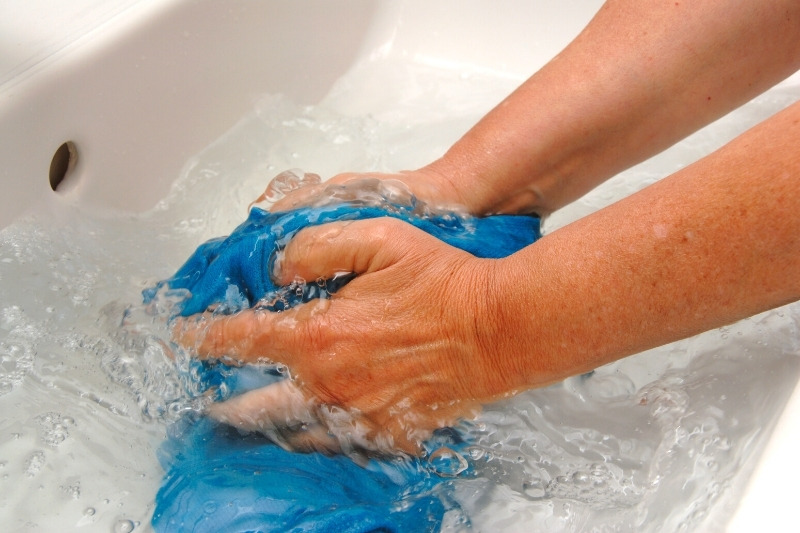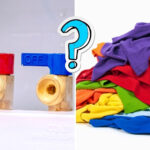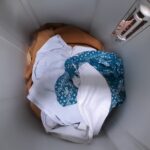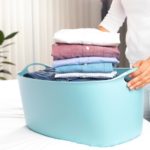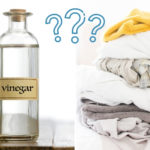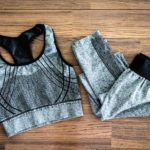Maybe you have run out of detergent, or maybe you just want to save some money on your laundry.
Whatever your reason for wanting to cut out soap and detergent from your laundry, one question you’ll battle with is whether you can wash clothes with just water. This article will answer all your questions, so let’s get started!
What Cleans Clothes – The Soap or the Water?
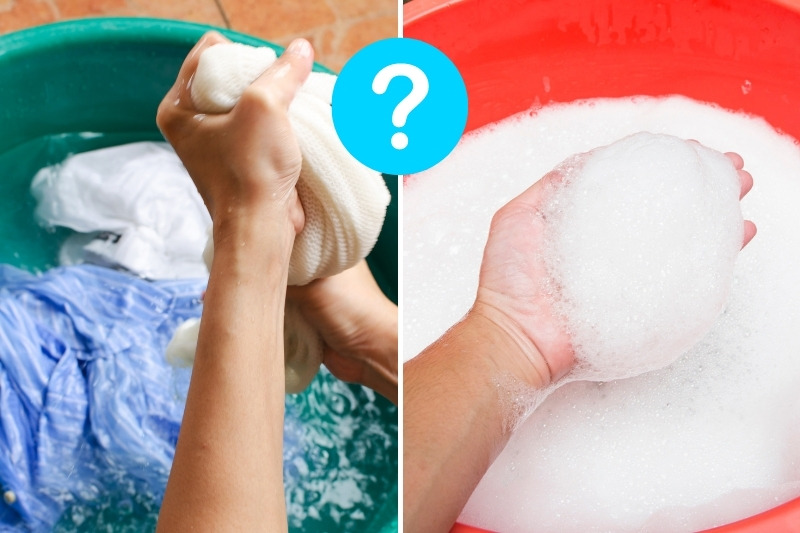
When doing your laundry, it is the water and not the soap (or detergent) that does most of the work. In the washing process, water penetrates the fabric to lift away the dirt to clean your clothes. That means washing with water alone can give you clean clothes.
So, what exactly do soaps and detergents do? Water has to penetrate the fabric for it to lift out dirt and clean your clothes. Ideally, you need something to make water better at penetrating fabrics helps it to clean more effectively.
That is where soaps and detergents come in. Soap breaks the surface tension of water to soften water, and make it penetrate the fabric better. By helping water to penetrate fabrics, soaps make water more effective at lifting out dirt from clothes.
While that’s true, there is bad news if you want to wash with just water. Laundry detergent contains molecules known as surfactants. These are molecules that have a head that is attracted to water and a tail that is attracted to grease and oil.
Due to this, surfactants are very good at cleaning oil-based stains. If your clothes contain oil-based stains, washing with water alone probably won’t be very effective.
How to Wash with Just Water
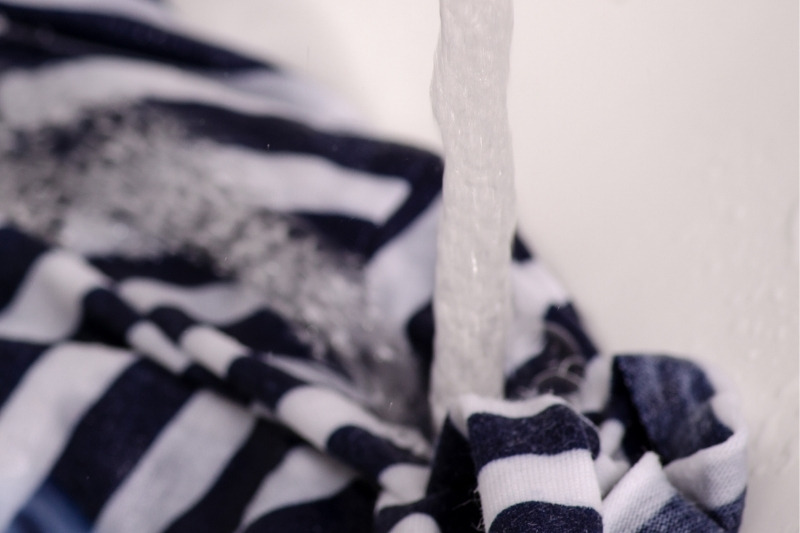
Your clothes can come out fresh and clean if you ditch soaps (and detergents) and do your laundry with just water.
Some useful tips for washing your clothes effectively with just water include:
- Use hot or very warm water for most stains. Be careful though, as hot water can shrink some materials.
- Use an intensive washing cycle
- Do not overload the machine
- Pretreat stains
1. Use hot or very warm water
The temperature of the water you use when doing your laundry will affect how well stains come out. Hot water opens up the fibres in the fabric. As a result, the water penetrates the fibres more effectively, making it more effective at lifting out the dirt particles nestled in the fabric.
Cold water does the opposite. It makes the fibres of the fabric contract, making it more difficult for the water to penetrate the fibres to lift out dirt nestled in it. That said, for an effective wash with just water, use the hottest water setting that your machine will allow.
It’s not always so straightforward though. Firstly, your clothes may not be suitable for a high-temperature wash so you’ll want to check this before throwing them in the machine.
Secondly, cold water is better for protein-based stains such as milk, blood, vomit and sweat. If you have any of these stains then it’s going to be a good idea to soak them in a cold water (30°C) solution first.
If you have different stains such as sweat and grease, it may be best to soak the washing in cold water initially and then give it a hot wash.
2. Use an intensive washing cycle
The longer the washing process, the longer the water has to penetrate the fibres of the cloth to lift out dirt. So, when washing with just water, you should use the longest cycle available on your washing machine.
Alternatively, you could soak the clothes overnight instead to allow water to penetrate the fibres of the fabric as much as possible. Then you can transfer them to your washing machine for your regular washing cycle.
3. Don’t overload the machine
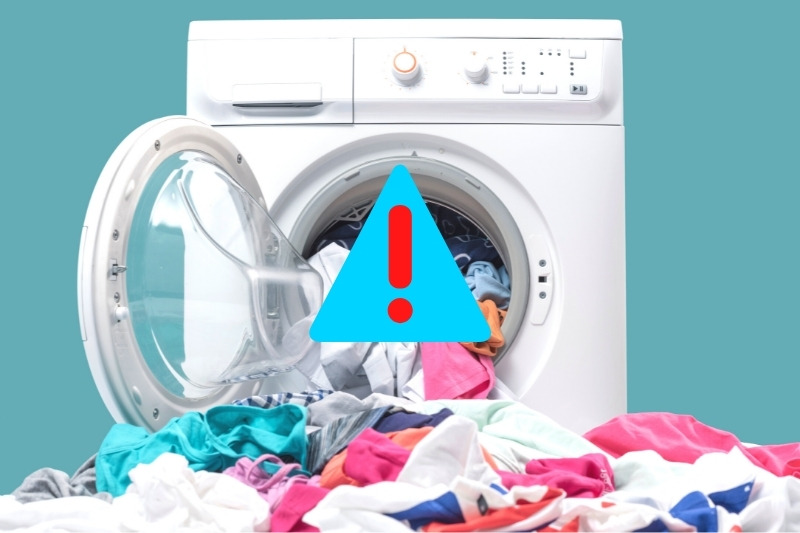
A washing machine needs to agitate well for it to give clean clothes in a water-only wash. This means you need to avoid anything that will hamper your machine’s agitation, such as overloading the drum.
So, for an effective water-only wash, don’t overload the machine. Make sure there is enough space for the clothes to move around freely in the drum. The optimum wash load for effective agitation in an water-only wash is around a half-full or quarter-full drum.
4. Pre-treat stains
Even when using soaps and detergents, some nasty stains do not go away in regular washes. For an effective wash, such nasty stains need to be pre-treated. Pre-treating stains means tackling them before washing the clothes.
The universal rule for pre-treating stains is to tackle them as soon as possible. The longer a stain sits on your clothes, the more likely it is to stick and be difficult to remove.
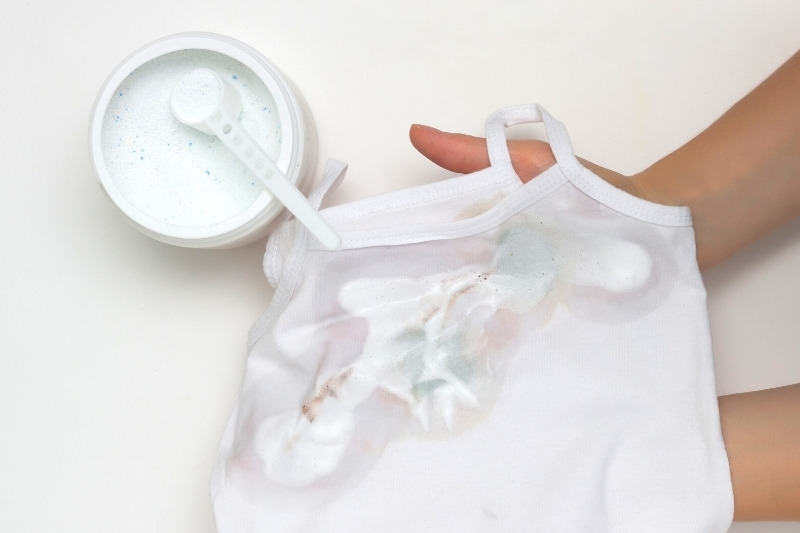
Some ways to pre-treat stains include the following:
- Soak overnight – Soak your stained clothed for a long time in water to loosen the fibres, allowing stains to be lifted out. Hot or very warm water is usually better when soaking clothes.
- Spot-wash the stained area – Spot-washing means washing the small area of the stain instead of the entire garment. If you’re interested in washing with just water, you can also spot-wash with just water. Depending on the material of your garment, you could use a soft toothbrush to gently work the area of the stain.
- Use dish soap – You could also use dish soap to pre-treat a nasty stain. Simply rub the dish soap into the spot. You may also use a soft toothbrush to work the soap into the spot. You can follow this pre-treatment by spot-washing the stained area.
- Use natural detergent alternatives like vinegar and bicarbonate of soda (baking soda) – You can treat some stains by pouring white vinegar on the stained area. Alternatively, mix 2 parts bicarbonate of soda with 1 part warm water, then spread the paste on the stain. Then rub it with a toothbrush, or soak the whole garment in water.
Final Thoughts
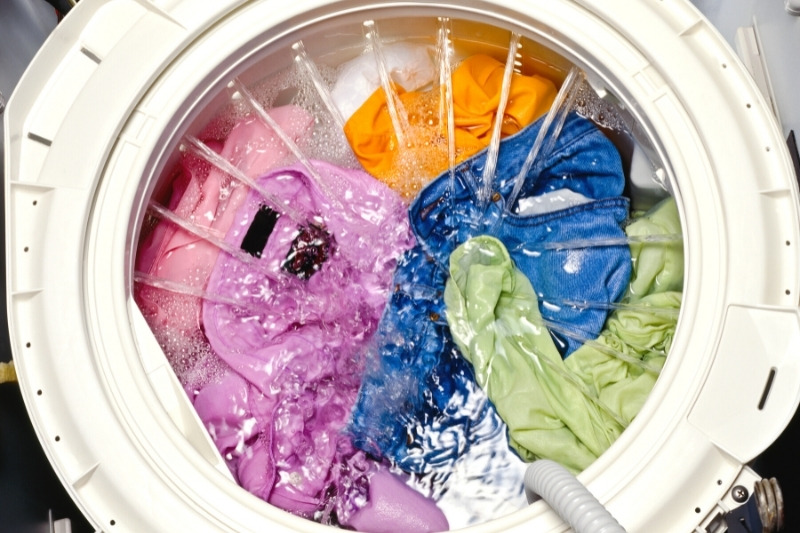
It is perfectly fine to wash clothes with just water, but the results won’t be as quick or as effective as washing with laundry detergents.
Laundry detergents have been developed to be very good at working with the water to lift away stains and leave your clothes spotless.
If you are washing clothes that don’t have any stains, then just using water can be a great way to go. To get good results when washing with only water, use the hottest water the fabric will allow and the longest cycle. Also, don’t overload your washer’s drum.
Most clothes can be washed with just water. If you’re looking to use less detergent, it can be a great idea to separate your laundry into lightly soiled and heavily soiled items. You can then use just water for lightly soiled clothes and use detergent for heavily soiled clothes.

I’m a mother of three who loves going on fun adventures with my family. With three little ones, I’ve learned the hard way how to keep a busy home clean! I want to share my tips and tricks to make your life as easy as possible.
